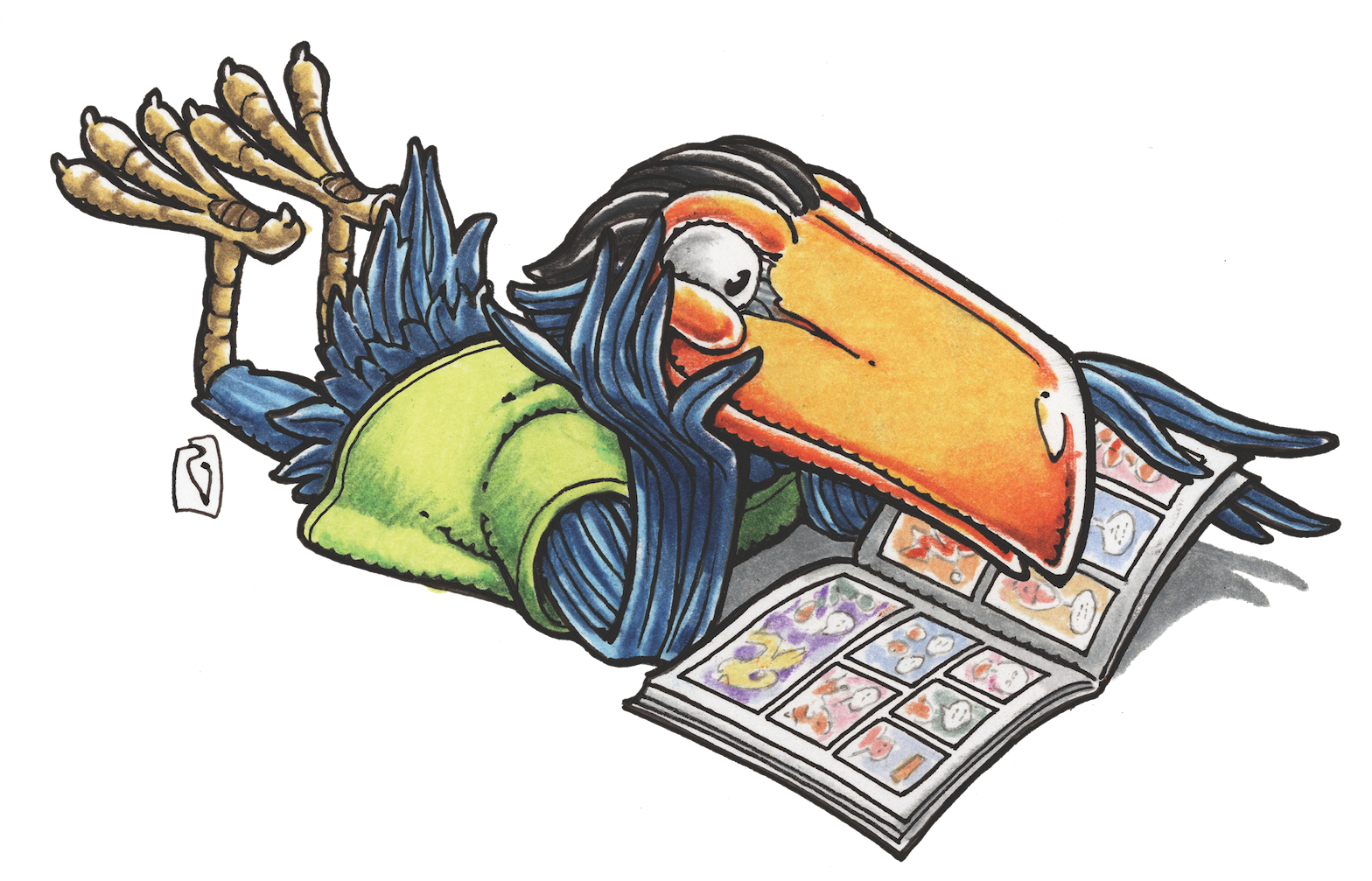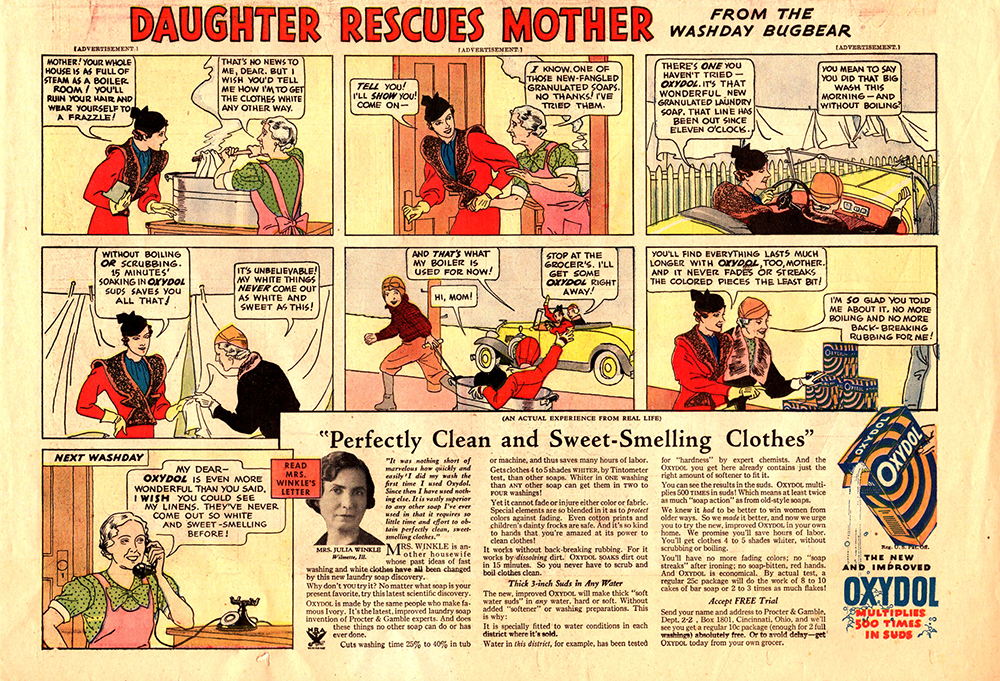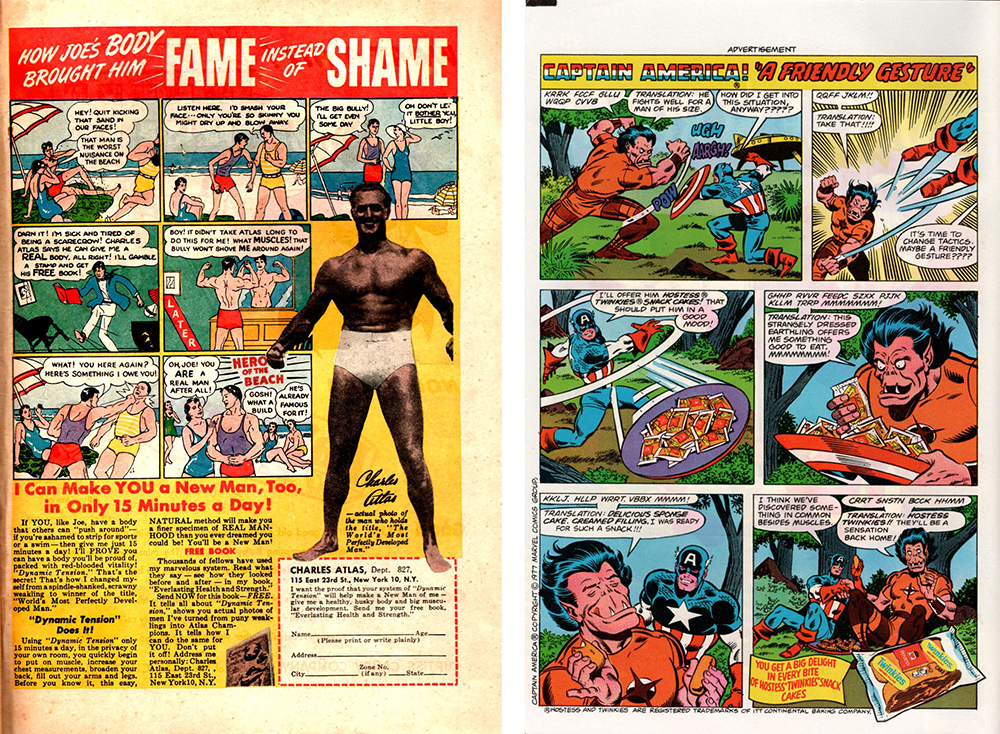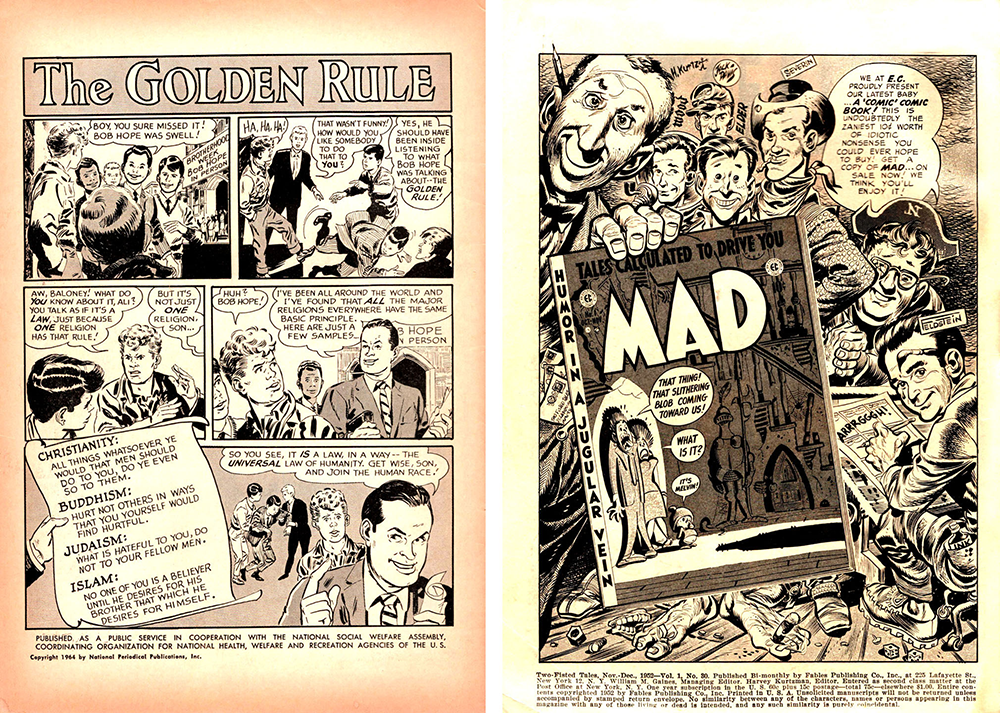MAGGIE’S WORLD BY MAGGIE THOMPSON
Maggie’s World 095: Ads and Comics


Comics ads have been around for a while.
“Hey Skinny! . . . Yer ribs are showing!” “How a 97-lb. weakling became the ‘world’s most perfectly developed man.’” “Tired of being picked on?” “The insult that turned a ‘Chump’ into a ‘Champ.’” “The insult that made a Man out of ‘Mac.’”
Not all the ads for Charles Atlas’s “Dynamic Tension” training were in comics form—but the comics panels that showed a bully kicking sand in the face of a guy at the beach were so well known that they formed the basis of a wide variety of pop culture responses.
Whether it came in “I Can Make You a Man” from the 1973–1975 Rocky Horror Picture Show musical or in Jack Kent’s delightful The Once-Upon-a-Time Dragon (1982) children’s book, audiences knew the reference. (Admittedly, in the case of Jack Kent’s book, it’d be the adult reading to the child who would understand the reference. But I digress.)
Among the reasons for its resonance are that (a) the ads seemed to be everywhere and (b) their pictures were clear and made the saga memorable.
The campaign was a prime example of the power of comic art to convey a message.

Hey, what the heck? In order to sell its Twinkies, Hostess took this Marvel characters ad in Gold Key’s Uncle Scrooge #149 (February 1978). © 2021 Marvel
Comics Ads Grab Customers
According to Wiki, it was in 1929 that Charles Atlas (1892– 1972) involved his Charles Atlas Ltd. with ad man Charles P. Roman. Roman produced those catchy strips that promoted the Atlas bodybuilding course. And Roman wasn’t alone, as an increasing number of advertising designers reached customers via comics. Distinctive comics characters were invented to introduce compelling stories about products for sale.
When media planners decide where and how to place their ad dollars, comics have been part of the mix for quite a while. Those planners have to figure out how to best send their message, and it looks as if comics have paid off for many years.
It’s time for a tip of the Thompson Topper to Woody Gelman (1915– 1978). If you’re not familiar with his name, it may be because you weren’t beginning to get into comics in the 1960s. As Wiki notes, his Nostalgia Press “pioneered the reprinting of vintage comic strips in quality hardcovers and trade paperbacks.” I don’t think most of us knew that his earlier connection to comics included that he’d co-created DC’s “The Dodo and the Frog.”
In any case, Gelman had joined artist Ben Solomon to set up a company that developed ad campaigns that included comics. Comic books packed with their own characters soon contained full-page stories featuring Popsicle Pete. A gum company beckoned, and Solomon became art director and Gelman became creative director of Topps. And Bazooka gum (which began in 1947) soon contained little comic strips themselves, eventually featuring Bazooka Joe. (Heck, eventually Gelman also came up with more, including Mars Attacks! Just saying.)
Comics to Ads
Sometimes, though, it was pre-existing comics characters that became identified by ad agencies as friendly partisans that could spread their messages.
Marjorie Henderson Buell’s Little Lulu first appeared as the concluding cartoon panel every week in The Saturday Evening Post. Not only did she get a translation into full-length story adventures in comic books and animated cartoons—but she also became the spokesgirl for Kleenex tissues.
Popeye promoted spinach and then Instant Quaker Oatmeal.
The animated stars of The Flintstones appeared for both vitamins and (yes, “a Winston break!”) cigarettes.
Hostess hired both DC and Marvel super-characters to let readers know that they’d get “a big delight in every bite” of its treats.
Advertising took to animation eagerly, sometimes with bonus comics. Quisp, Quake, Cap’n Crunch, Cocoa Puffs, Lucky Charms, Trix . . . You can come up with many more.
And what the heck? Every once in a rare while, a commercial product would get its own comic book!
John Stanley, for example, wrote Choo-Choo Charlie, a one-issue Gold Key title (December 1969) that featured the TV-ad character known for recommending Good & Plenty candy.
And, of course, there were ads for comics—in comics.

Heck, this ad in EC’s Two-Fisted Tales #30 (November–December 1952) not only promoted a promising new series, it also clearly identified some staffers (and taught readers to look for signatures). © 2021 EC Publications, Inc.
Ads Subsidized Comics
The topics of comics economics and distribution can be complex. (As in: Dell was a distribution company that handled its own racking in the 1940s and 1950s, so its costs differed from those of companies that hired other firms to maintain stock in newsstands.) But comic book prices stayed relatively low for years, thanks in part to support from the advertisers that filled many comic book pages.
DC’s Action Comics #1 (June 1938) was made up of 68 pages of which more than 65 (including the cover) were filled with editorial content. It was just getting started, and most of the ads promoted company material, though the back-cover ad was devoted to the ever-intriguing Johnson Smith & Co. catalog.
Eventually, Action Comics settled down to a pretty normal page count of 36 (including the cover), and, dipping in now and then, we find that ads filled a substantial number of them. In 1971, issue 402 was priced at 15¢ for 36 pages, of which roughly a third were ads. In 1976, #456 (25¢) had 44 percent of its 36 pages as ads. And so it went. In 1999, #760 ($1.95) had 36 pages, of which about 30 percent were ads.
Well, Heck . . .
Come to think of it, if you grab The Overstreet Comic Book Price Guide, you’ll find an entire section labeled “Promotional”—meaning that it contains information on giveaway comics that were used to, well, promote things. Which is to say they were ads. Among the long-running comics in the section are Adventures of Big Boy, Buster Brown Comics, Gulf Funny Weekly, and the champ: Western’s March of Comics.
Come to think of yet something else, Maggie’s World #50 was a pretty deep dive into the topic—which involved comics that were ads for themselves—and brought up the matter of Free Comic Book Day. Remember: Every Free Comic Book Day, some releases have functioned as their own giveaway ads for comics soon to be on sale. (Tip: The 20th anniversary of Free Comic Book Day will be in 2022!)
Because even comics ads can be a treat.
Maggie’s World by Maggie Thompson appears the second Tuesday of every month here on Toucan!